Search Results for 'Margaret Athy'
9 results found.
Gaelic Ireland comes to life at Galway City Museum
This Halloween midterm break, the ghosts of Gaelic Ireland may be gracing the galleries of Galway City Museum as Dave Swift of Claíomh Living History, shines a light on Ireland’s Gaelic past.
St Augustine’s Fort/Forthill
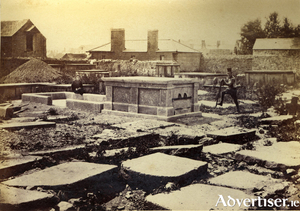
The site of the Augustinian House when the order first came to Galway in 1508 was on the hill we know as Forthill today. Margaret Athy, the wife of the Mayor Stephen Lynch, invited them and she built a church and steeple there too. Her husband was away in Spain and got a shock when he returned to see the finished new building on the hill. The friars moved into a house within the walled city but their church was still between the city and the bay.
Forthill Cemetery, 1905
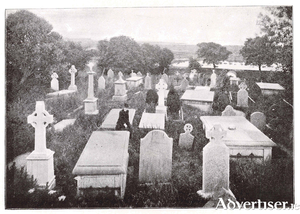
It is often said that one cannot claim to be a true ‘old Galwegian’ or ‘auld shtock’ unless one has some relations buried in Forthill Cemetery at Lough Atalia. It is probably the oldest cemetery in Galway. The Augustinians have been associated with it since the year 1500. The Augustinian convent or priory was built there by Margaret Athy at the request of a friar, Richard Nagle, and it probably stood on level ground at the upper level of Forthill. The grounds of the priory extended quite a bit along the shores of Lough Atalia, at least to the site where St Augustine’s Well is today. Nothing at all remains of the priory except some drawings on the 1625 and 1651 maps.
The call of St James was heard once more...
Seventy years after Margaret Athy’s generous patronage of the Augustine abbey and buildings on Fort Hill (originally St Augustine’s Hill), with its commanding view of the port and the town, the place was turned into a butcher’s block. Approximately 300 survivors of the ill-fated Armada were beheaded there.
A ‘cheerful, and amiable saint’.
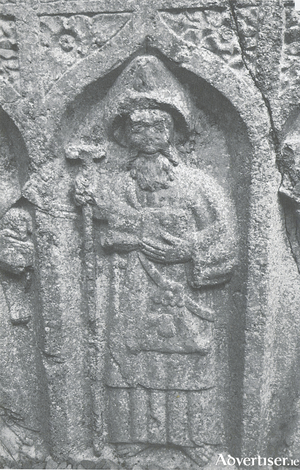
In the early years of the 16th century, Stephen Lynch fitz Dominick was returning from an extended trading voyage in Spain. He set out with a full cargo, probably of hides, wool, and fish, which he hoped to trade for wine and iron with Spanish merchants. As he approached Galway port he was surprised to see a church and buildings almost completed on Fort Hill (originally called St Augustine’s Hill), a prominent site visible from both the town and the sea. They were not there when he left.
What the so called ‘empty frame’ may have looked like...
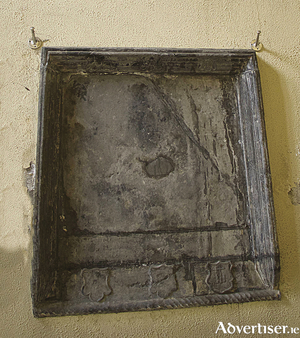
Last month Galway Diary explored the sham legend that grew around the so-called ‘Empty frame’ on the wall of the Lynch’s Chapel, or Lady’s chapel, in the historic St Nicholas’ Collegiate church. The late Canon George Quinn pronounced that this was the very frame in which the Bishop of Clonfert, Walter Lynch’s sacred icon of the Madonna and Child once hung, before he was forced to flee just before the arrival of Cromwell’s soldiers in April 1652.
The Galway Augustinians
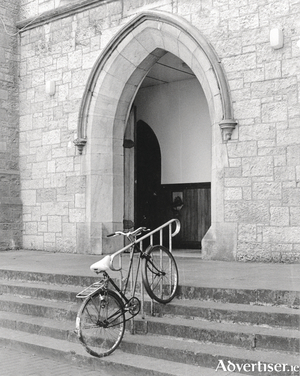
These are probably the best known and best worn set of steps in Galway. They were built in the 1855 - 59 period while the present Augustinian Church was being constructed. The site was slightly higher than the road level so the steps were required at the front and the back of the church. The Augustinian connection with the city goes much further back than that.
‘What part of Galway is Ireland situated?’
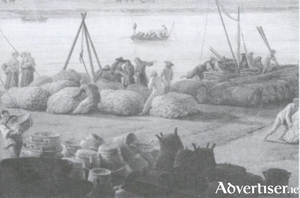
By the 16th century Galway was a compact, well laid out town with handsome buildings. The wealth of the Tribal families, built up over decades of canny and adventurous trade, was reflected in their luxurious homes; fragments of which, in delicate carved limestone, remain around the old town.
The Athy Doorway
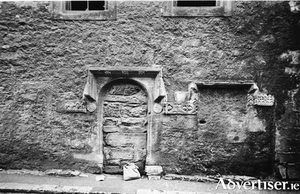
The Athy family are of great antiquity in Galway. They were originally Anglo-Norman, but on coming here, they quickly became one of the original Tribes. Their estates were mainly in the Oranmore area, they owned the Rinville Estate. They are credited with being the first family to erect a stone building in the city in the 13th century. Castles associated with the family through the years are Ballylee, Carrigín, Glinsk, Castletown, Rinville, Claregalway, Ardmullivan, De Bermingham’s, Aughnanure, and Castledaly.

